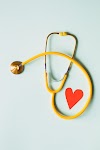What Is the Keto Diet Plan?
A keto diet is notable for being a low-carb diet, where the body produces ketones in the liver to use as energy. It is known by various names - Ketogenic diet, low carb diet, low carb high fat, etc.
After two to seven days of following the keto diet, you run into too much alcohol in the form of ketosis or enter your body when your body desires more carbs for energy in your cells. is. is. When you start making ketones, or organic compounds, your body uses those missing carbs. Now, your body starts consuming fat for more energy,
So how do you know that you are in ketosis?
There are some side effects that can tip you over, such as breath that smells a bit like a nail polish remover (seriously), or if you use strips (which you urinate) or a kit like this breath analyzer.The ultimate goal of a properly maintained keto diet is to force your body into this metabolic state. We do this not by starvation of calories, but by starvation from carbohydrates.
What should I eat on the keto diet?
To start a keto diet, you will want to plan ahead. This means preparing and waiting for a viable diet plan. What you eat depends on how fast you want to get into the ketogenic state (ketosis). The more you are on your carbohydrate (less than 25 grams of pure carb per day), the faster you will enter ketosis.
Keto-Friendly Foods to Eat
When following a ketogenic diet, food and snacks should be around the following foods:
Keto Food List
Eggs: In the past, organic whole eggs made the best choice.
Poultry: Chicken and turkey.
Fatty fish: wild-caught salmon, herring, and mackerel.
Meat: Grass-fed meat, Henson, pork, organ meat, and bison.
Full Fat Dairy: Yogurt, butter, and cream.
Full Fat Cheddar: Cheddar, Mozzarella, Brie, Shaver, and Cheddar.
Nuts and seeds: Macadamia nuts, almonds, pecans, pumpkin seeds, peanuts, and flaxseed.
Nut Margarine: Mango peanuts, almonds, and cashews.
Strong fats: Coconut oil, olive oil, avocado oil, coconut spread, and sesame oil.
Avocados: Whole avocados can be added to almost any meal or breakfast.
Vegetables: greens, broccoli, tomatoes, mushrooms, and peppers.
Taste: salt, pepper, vinegar, lemon juice, new spices, and flavors.
Foods to avoid
Avoid carbs-rich food sources by following a keto diet.
The following foods should be banned:
Bread and Organized Items: White bread, whole wheat bread, wafers, treats, donuts, and rolls.
Pastries and Sweet Food Sources: Sugar, Frozen Yogurt, Candy, Maple Syrup, Egg Syrup, and Coconut Sugar.
Sweet beverages: Pop, juice, sweet tea, and sports drinks.
Pasta: Spaghetti and Noodles.
Cereals and Oats: Wheat, Rice, Oats, Breakfast Cereals, and Tortillas.
Bland Vegetables: Potatoes, Yam, Butternut Squash, Corn, Peas, and Pumpkin.
Beans and Vegetables: Dark beans, chickpeas, lentils, and kidneys.
Fruits: citrus, grapes, bananas, and pineapples.
High Carb Sauce: Barbecue Sauce, Chinese Salad Dressing and Dipping Sauce.
Some alcoholic beverages: Beer and sugar mixed drinks.
Although carbs should be restricted, low-glycemic fruits such as berries can be enjoyed in limited quantities, as long as you do not maintain the keto-friendly macronutrient range.
Be sure to take good food sources and avoid prepared food sources and undesirable fats
Keto Diet Plan Vegetarian
List of Keto Vegetables
The Keito General Guideline is to prevent any vegetables from growing below the ground. Although the ultimate goal is to avoid high-starchy vegetables, this allows for vegetables that contain slightly more carb.
asparagus
Brockley
Brussel sprout
cabbagecauliflower
Celery
Cucumber
green beans
cauliflower
Chilli (Red and Green)
Spinach
Olive
Trumpet
salad
cauliflower
Swiss chard
tomatoes
Avocado (technically a fruit)
Vegetables to avoid the keto
Rarely have you ever heard of anyone avoiding vegetables, but when it comes to the low-carb keto lifestyle, some veggies can be more harmful than helpful in achieving your goals. As mentioned above, root vegetables usually carry more carbs, which is why they are considered one of the least keto-friendly vegetables. Here are some others:
potato
Squash (butternut, acorn)
Sweet potato
baked potatoes
Yam
Legumes
peas
Corn
artichoke
Parsnips
Cassava (yucca)
sugar beet
Turnip
Celiac
Onion (in large doses)
Pro tip: Onions are often used as a spice and are usually not eaten in large quantities; however, it is best to avoid caramelized, grilled, or sauteed onions as they can be eaten in large quantities.













0 Comments